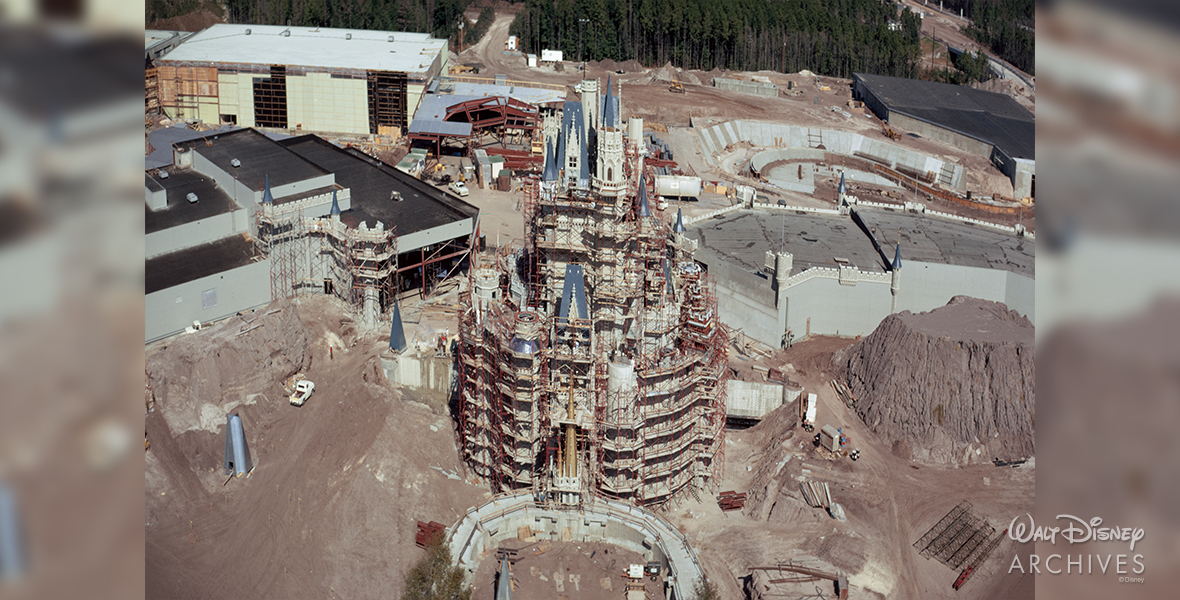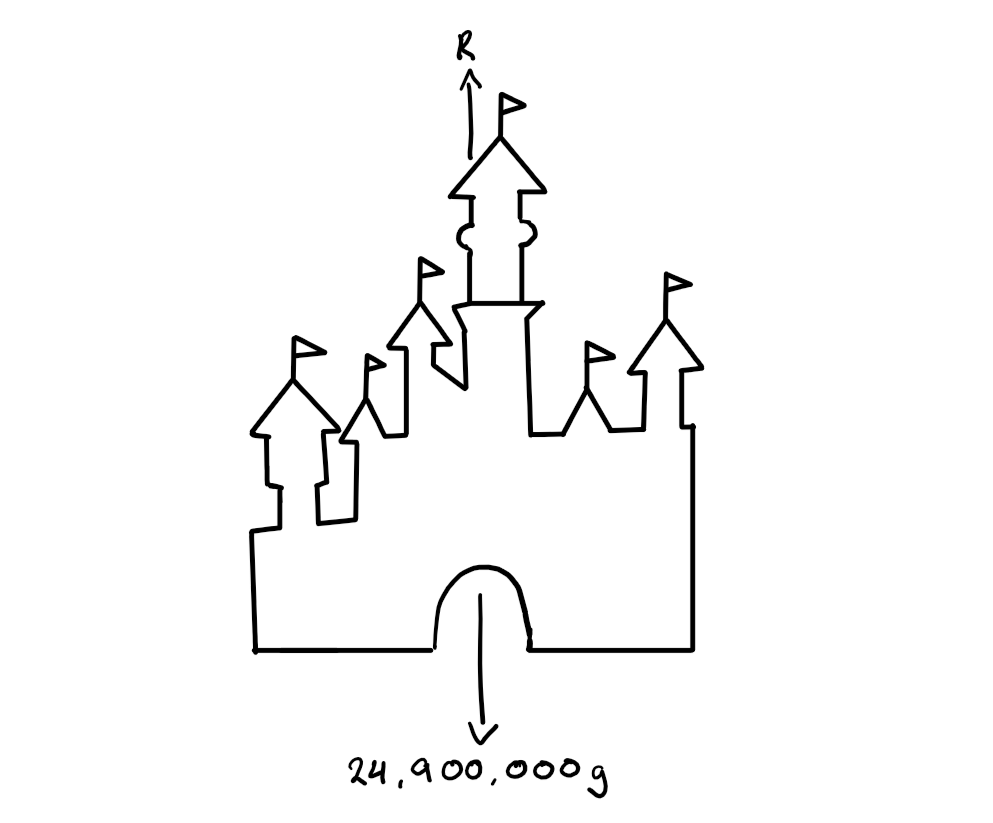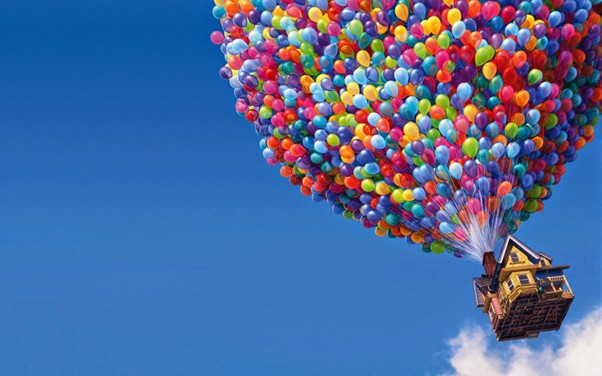Someone recently asked me to bring her back the castle from Disney World. Most people would laugh this off, maybe bring back a small souvenir castle, but could one actually bring back the full castle?
Defining the Parameters
How big is a Disney castle? Which castle are we stealing? How much will it all cost? These are all valid questions that should probably be answered.
There are 6 official Disney castles worldwide, the biggest being the Enchanted Storybook Castle in Shanghai Disneyland, standing at 60 meters high. However, for this relocation we’re going to pick Cinderella’s Castle at Walt Disney World in Florida. This castle stands at 58 meters high and consists of 600 tonnes of steel-braced frame construction with reinforced concrete encircling the structure. (Against popular legend the castle cannot be taken apart or moved in the event of a hurricane, making our job a little harder)
 Cinderella's Castle Under Construction.
Cinderella's Castle Under Construction.
So with 600 tonnes of steel (which is 600,000 kg) alongside being covered in reinforced concrete, which comes in at 2,400 kg per cubic meter. Estimating 9,000 m³ of concrete:
\[ 9,000 \times 2,400 = 21,600,000 \text{ kg} \]
And another 1,500 m³ of fiberglass, coming in at 1,800 kg per cubic meter:
\[ 1,500 \times 1,800 = 2,700,000 \text{ kg} \]
Adding them all together:
\[ 21,600,000 + 2,700,000 + 600,000 = 24,900,000 \text{ kg} \]
or about 24,900 tonnes.
Method of Extraction
We have now determined that our castle is roughly 24,900 tonnes in weight we need a plan to take the castle. Here’s a free-body diagram of our castle, resolving vertically.
 My free-body diagram of the castle.
My free-body diagram of the castle.
Rocket-Powered Takeoff
We could simply launch the castle into the sky like a rocket, to counter the force pushing down, we would need a thrust force of at least \( 24,900,000 \times 9.81 = 244,029,000 N\) or \( 2.44 \times 10^{8}N\). SpaceX’s Raptor 3 engine has a thrust of \(2.75MN\), or \( 2.75 \times 10^{6} \). This would mean we would require 89 of them to slowly move the castle. However, to compensate for the most thrust being at take-off we might as well use 100. This comes in at a reasonable price of $50 million (£39.7 million). Now this would get our castle off the ground, but it may not survive the acceleration. Using Newton’s Second Law, \( F=ma\), we can calculate the acceleration to be at \( a = \frac{2.75 \times 10^6 \times 100}{24,900,000} = 11.04 ms^{-2} \).
Giant Wheels
Instead of lifting the castle using rockets we could instead move it like we would a rocket. If we look at NASA’s Crawler Transporter. NASA’s Crawler Transporter once carried the Saturn V rocket, coming in at around 3000 tonnes. This would suggest that to carry our almost 30,000 tonne castle we would only require around 100 of these Crawlers, all synchronised together to move as one. With a single Crawler costing $14 million in 1965, this is about $130 million now (£100 million), it would cost us around $13 billion (£10 billion). There would also be the issue of moving the castle, probably causing mass destruction in any path moved alongside not being able to leave land. An ineffective strategy!
A Disney Certified Method
Looking back to Disney Pixar’s Up, how many balloons would we need to lift the Disney Castle.
 Carl and Ellie's house floating away.
Carl and Ellie's house floating away.
Though magic of pixie dust or Hi-Float balloon treatment (keeps in the helium) Disney’s balloons usually stay inflated for a few months. At an estimated 0.27 m³ of helium per balloon at $14 apiece at Disney we can use this to calculate how many balloons we need to lift the castle. Similar to our rocket powered takeoff, we require at least \( 24,900,000 \times 9.81 = 244,029,000 \) or \( 2.44 \times 10^{8} N\). 1 cubic metre of helium will lift around 0.996 kg. This would suggest that we require \(24,900,000 ÷ 0.996 = 250 million cubic metres\). This comes out to roughly 926 million balloons needed to lift the castle. Surprisingly, this is around the same as NASA Crawlers method, at around $13 billion (£10 billion). However, it remains in the most Disney Fashion of the options.
To Conclude
So, we haven’t done the hard maths, but we’ve done the fun maths. It’s still yet to decide how the rockets could travel across the Atlantic, or how much fuel we would use. Alternatively, how much power would be required to use 100 Crawlers, or how all our balloons would survive as they get closer to the sun. Maybe all of this could be answered in a part 2?
For now, I think we have concluded that the most practical would be to use SpaceX’s raptor engines, whilst the most Disneyesque approach would be with almost a billion balloons. These all however come with great costs, so maybe it would be better to bring her back a mini souvenir.
- The Walt Disney Company. thewaltdisneycompany.eu
- Walt Disney Archives (2022) Building a Fairytale. d23.com
- Cover Image by Brian McGowan on Unsplash